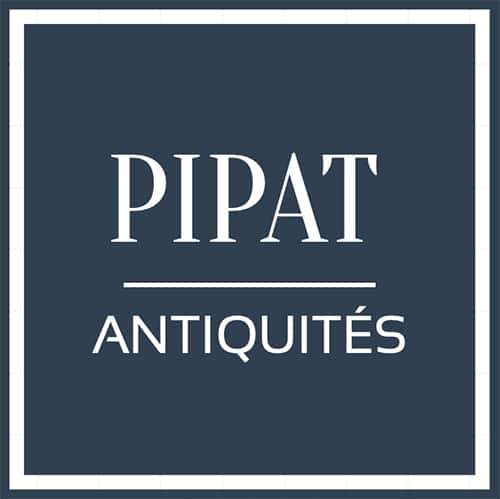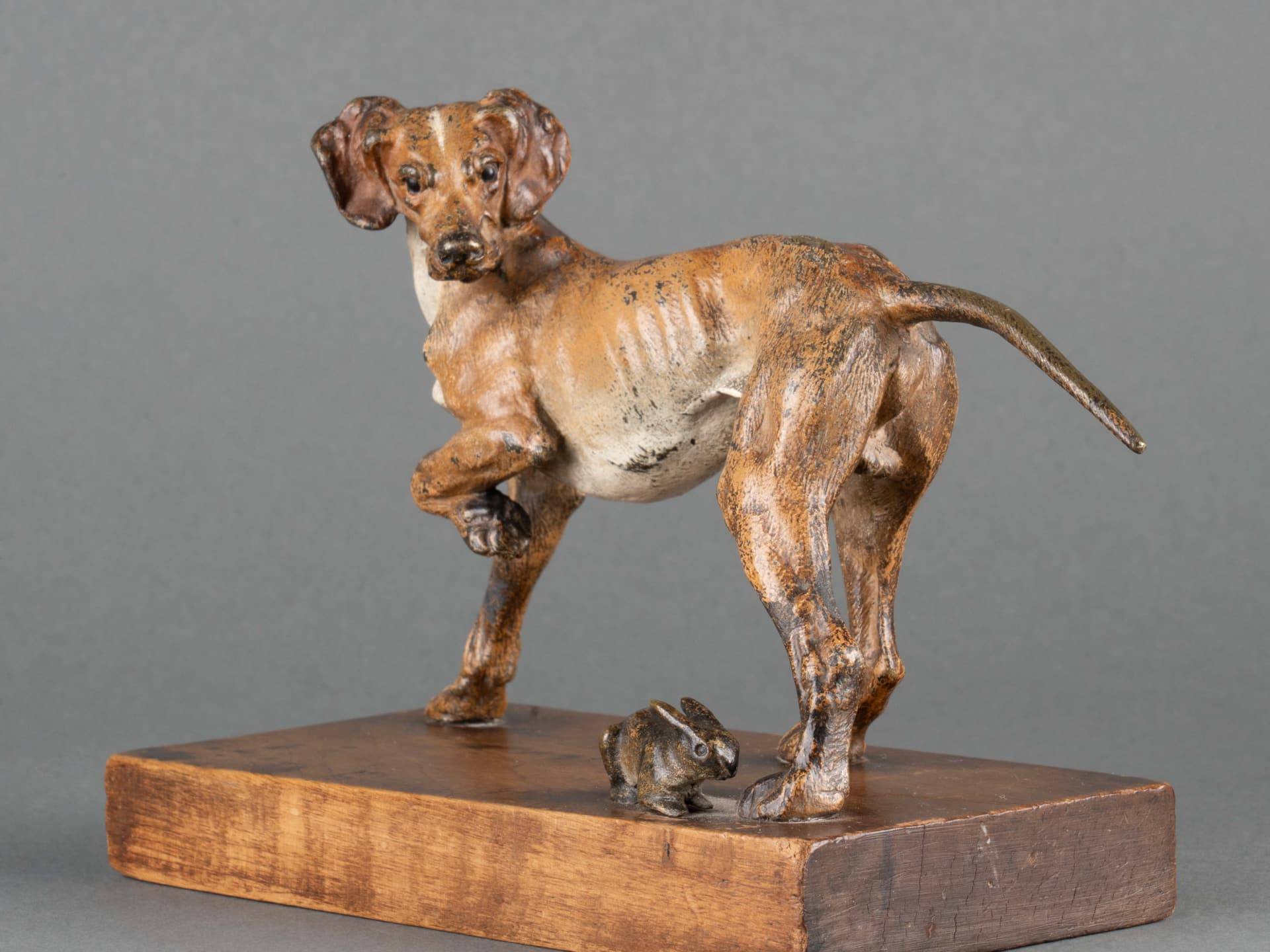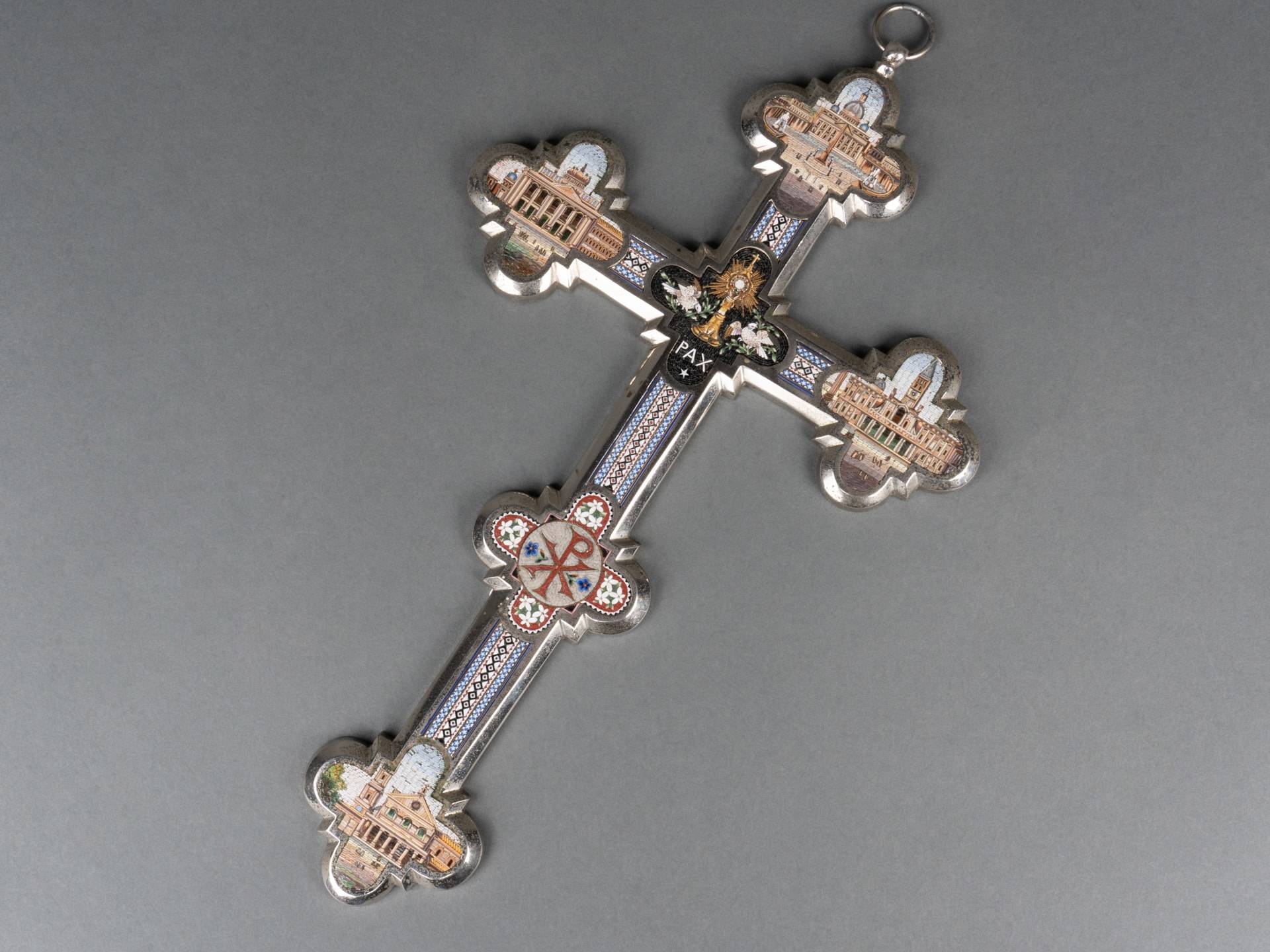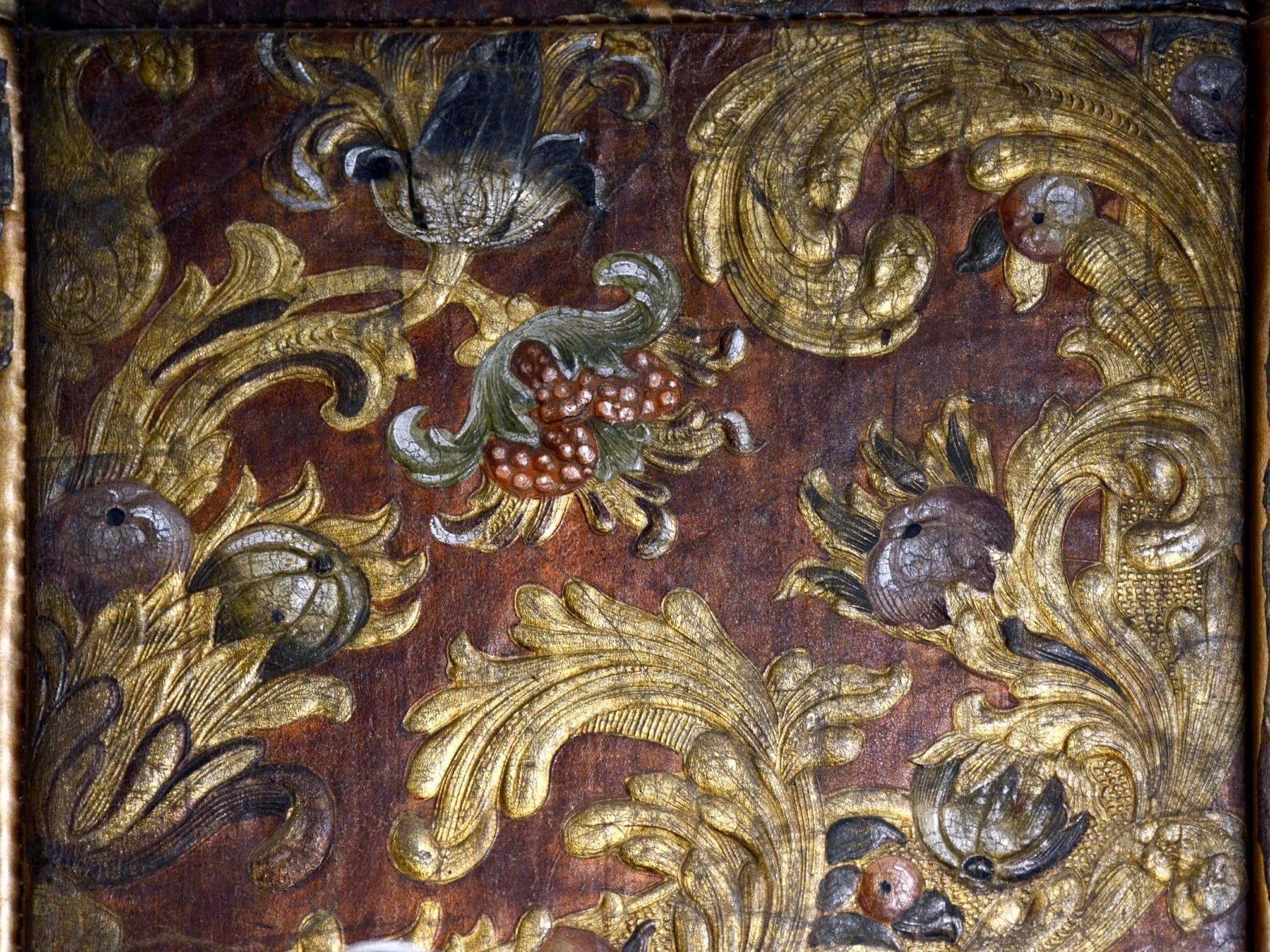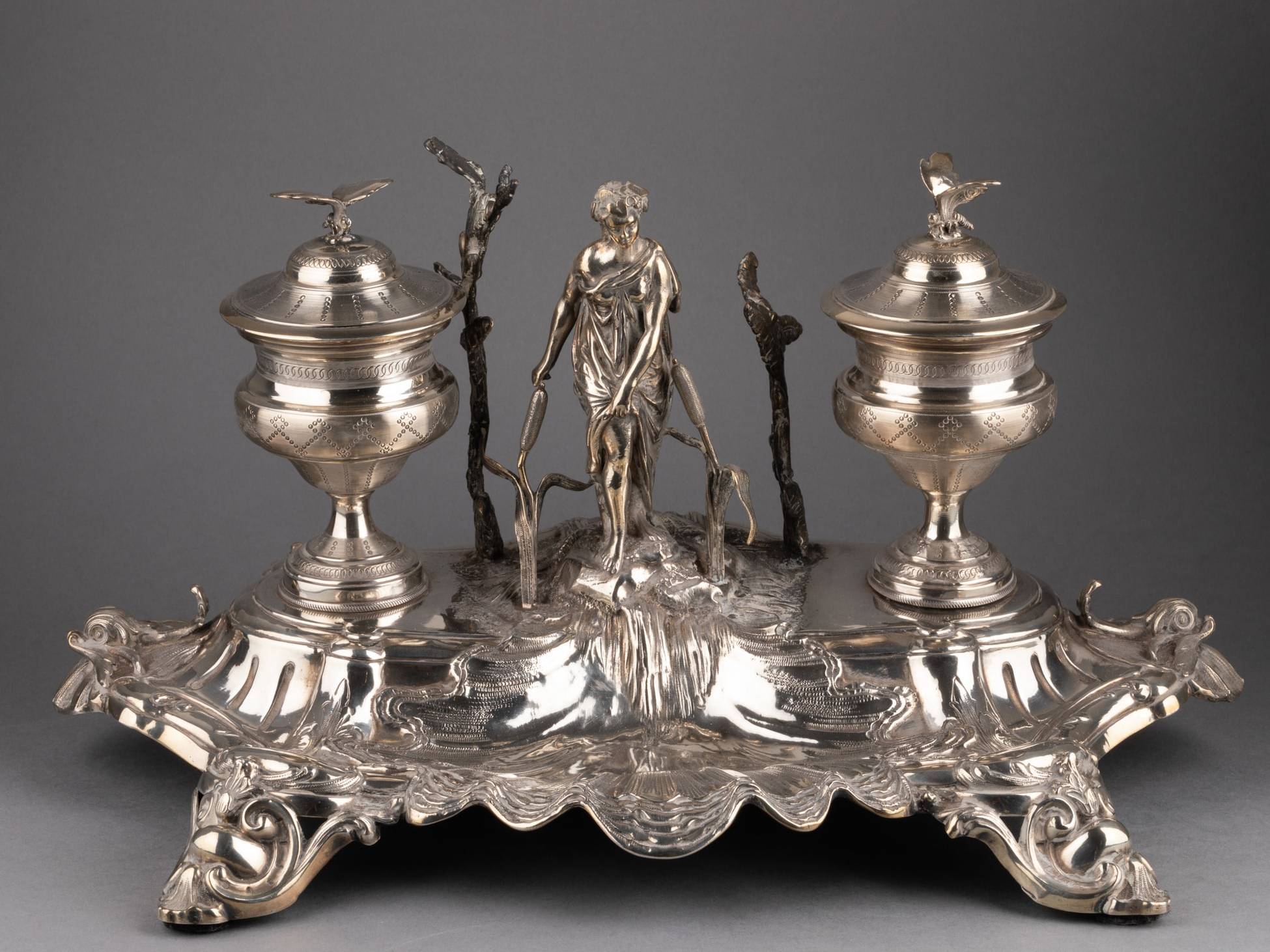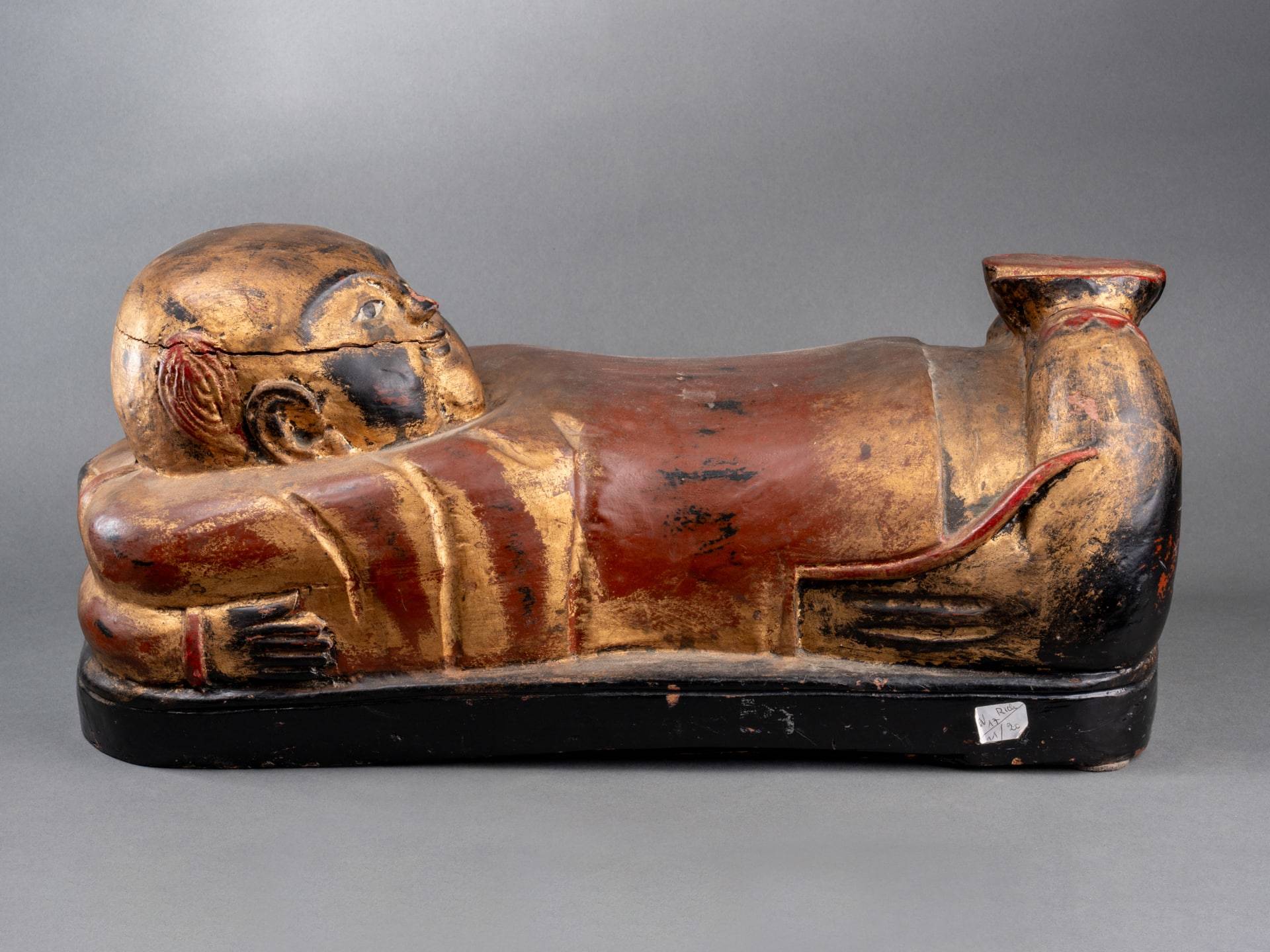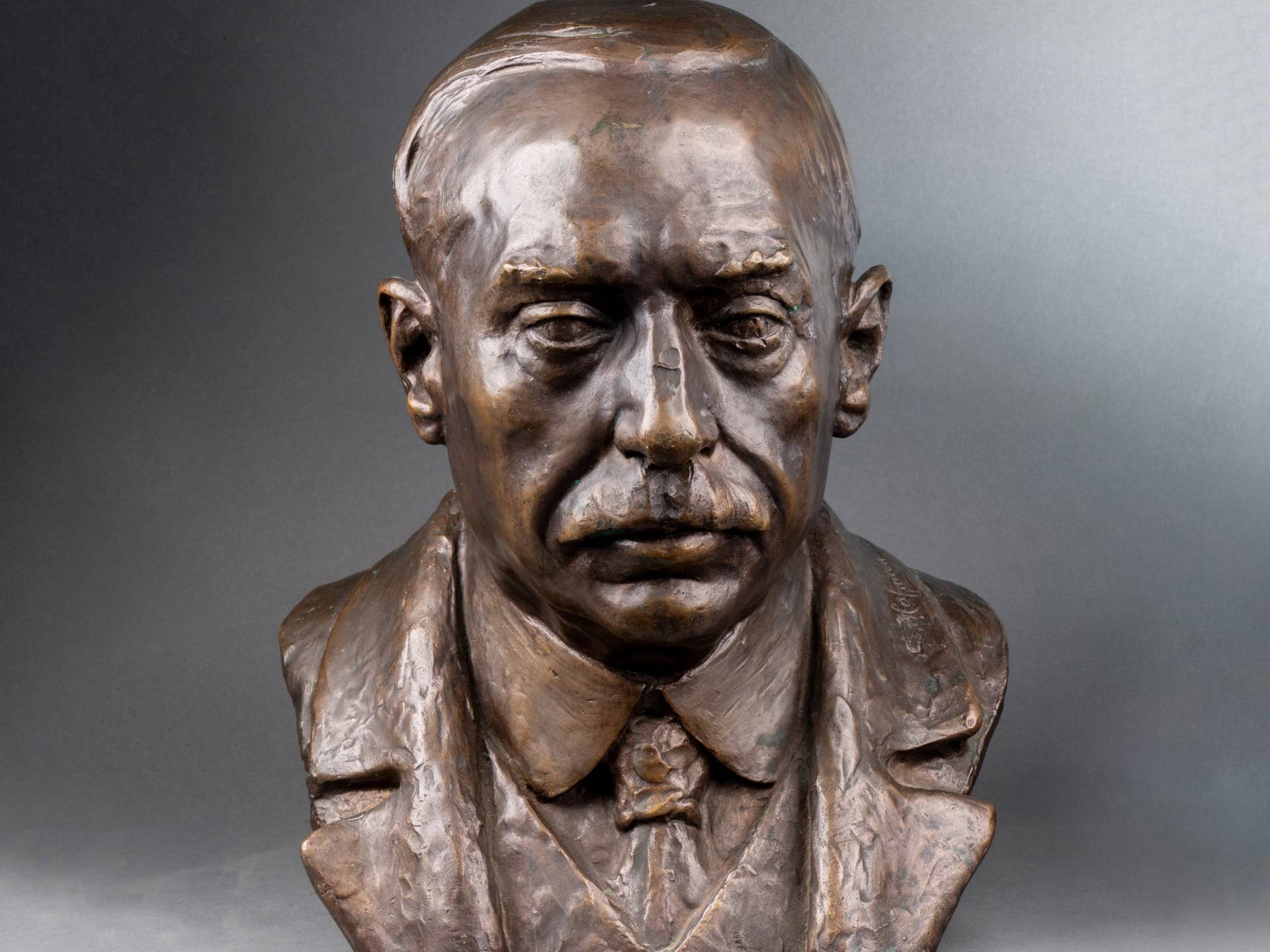Since Antiquity, the animal has fascinated and inspired. From Egyptian beetle-shaped amulets to the bronze bestiary appreciated during the Renaissance, the animal is stylized or, on the contrary, treated in a naturalistic way. A few centuries later, the industrial revolution of the 19th century aroused as much admiration for the machine as its rejection: an imperious need emerged to return to nature and its savage forces. Animals thus become new subjects treated for what they are, emblematic creatures of a nature faithfully reported by explorers and scientific campaigns carried out in the 18th century and throughout the 19th century.
The first beneficiaries of this new animal taste acclaimed by the french bourgeoisie are the Barbedienne and Susse Frères foundries. Before them, Antoine-Louis Barye had already founded his own foundry to publish his works.
Animal Sculpture in the 19th Century: Antoine-Louis Barye, the Undisputed Master
His father, a Parisian goldsmith, trained him in both goldsmithing and sculpture. Since the official opening of theJardin des Plantes and its menageriein 1794, the zoo has been assiduously frequented by artists and Antoine-Louis Barye is no exception to this fascination for wild nature. By dint of patient observation, sketches and naturalistic research, the sculptor manages to grasp with remarkable acuity what makes up the deep nature of each animal.
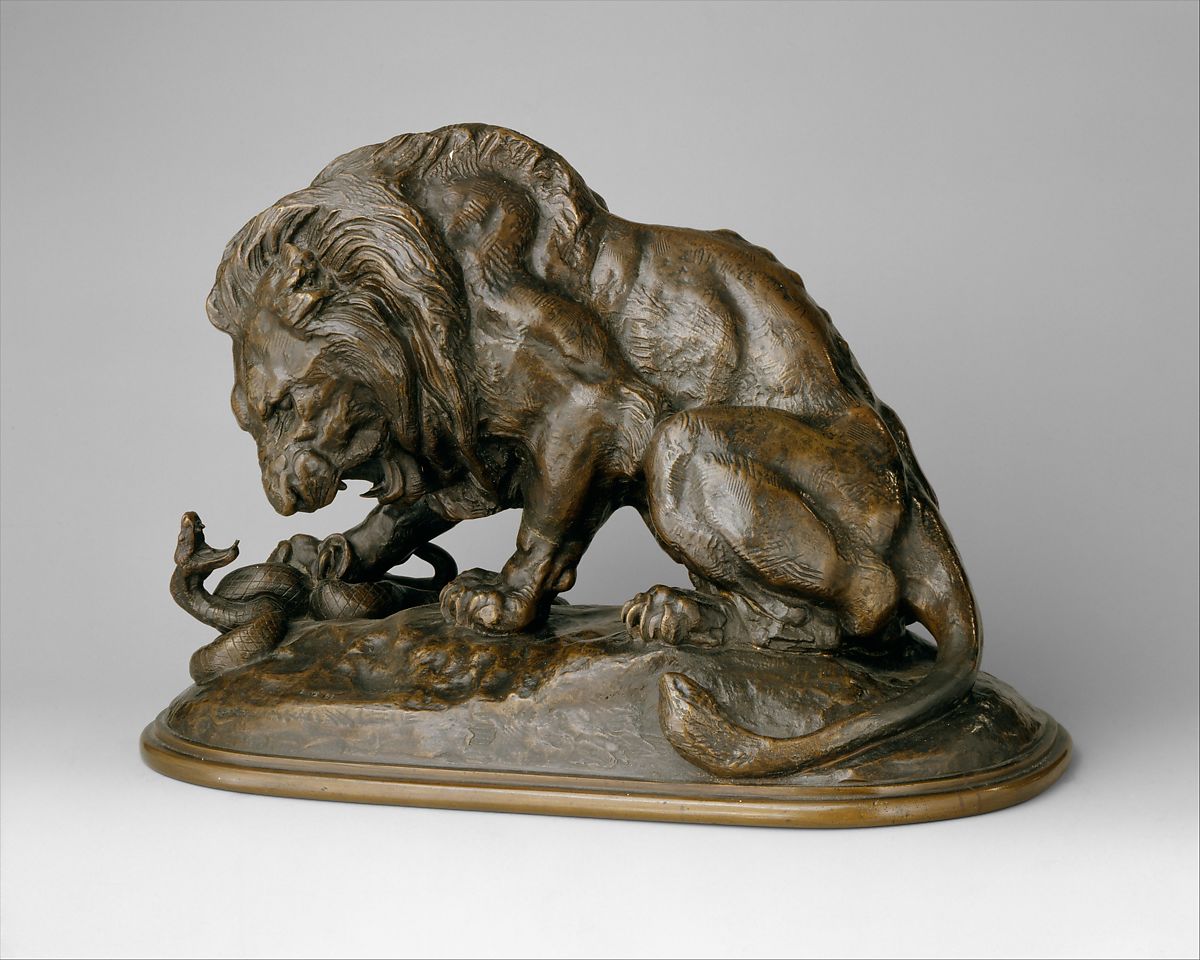
Barye prefers to the peaceful rest of his models, belligerent or furious outpourings in a very romantic verve; it is these violent impulses of life appreciated by the sculptor that seduce the public the most. The powerful muscles and the cruelty of the fights show through emphatically in his most famous works, including the Lion and snake or the Jaguar devouring a hare.

His favorite models are undoubtedly the big cats, closely followed by horses who unseat their rider to steal the show. The emblematic Turkish Horse is in this respect a masterpiece of the genre. Inspired by the ancient group of Marc Aurèle and Renaissance works – including those of Leonardo da Vinci – this horse was declined by Barye himself in seven versions with variations in size, shape of the base and position of the legs of the horse.
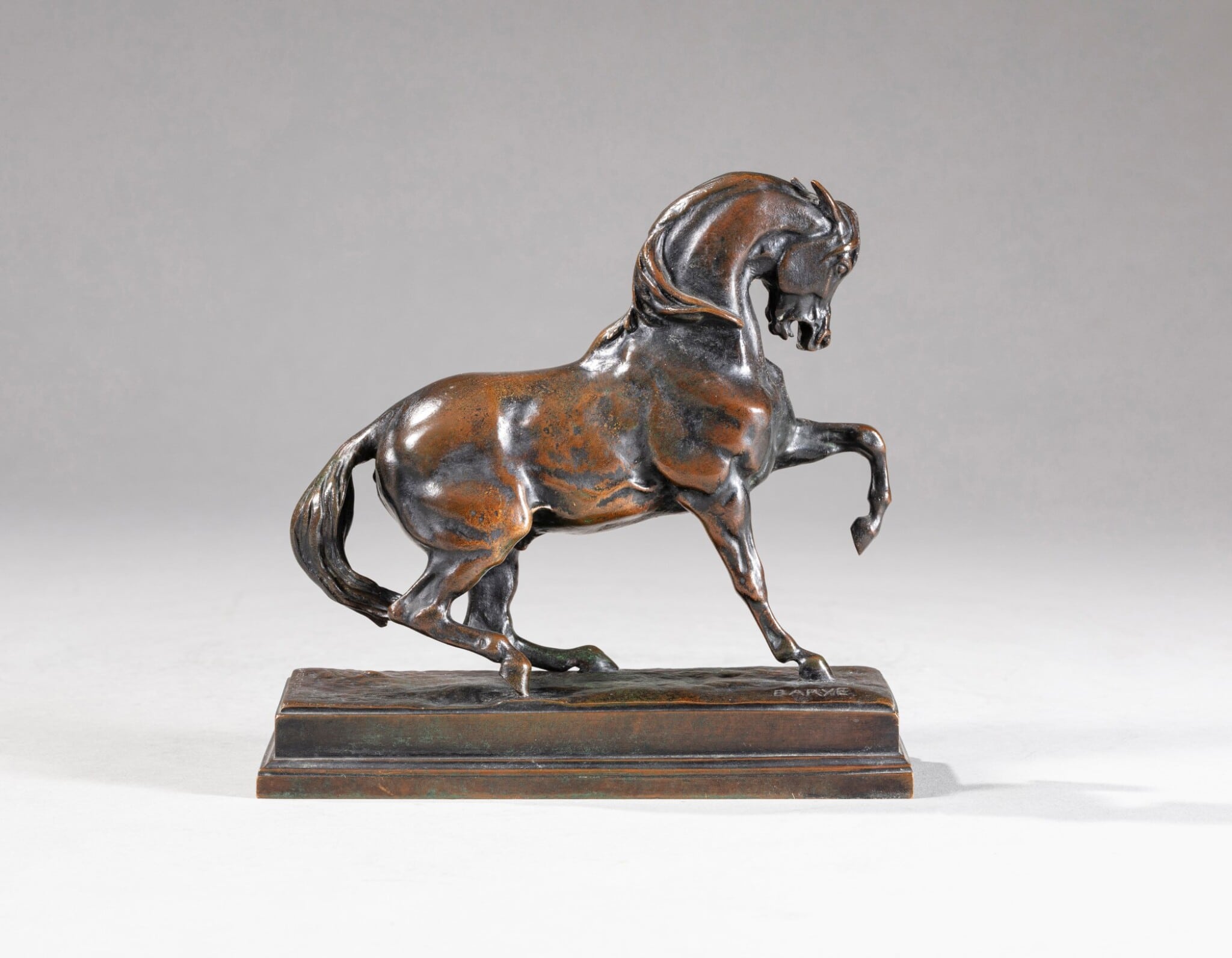
A virtuoso of bronze and mastering all the stages of sculpture, Barye went so far as to open his own foundry in 1838. If the public was initially hesitant in front of these only cast animals without any human figure, the virtuoso novelty did not take long to ignite amateurs and collectors so well that Théophile Gautier gave Barye the nickname as curious as “Michelangelo of the menagerie”!
However, it was at the turn of the 20th century that the craze for animal bronzes really crystallized. New artists emerge and slowly move away from romantic naturalism to sketch the animal world with a modern eye. Sensitive to cubism, stripped lines and Art Deco, the animal sculptors create an innovative bestiary yet punctuated with antique references.
20th Century Animal Sculptures: Pompon, Bugatti, Godchaux and Guyot
François Pompon (1855 - 1933)
One knows it without knowing its name, the amateurs recognize it at the first glance. François Pompon is undoubtedly one of the great precursors of modern animal sculpture. His unique way of capturing the force line of a silhouette and his taste for polished surfaces have elevated his animals to the rank of icons regularly up for auction.
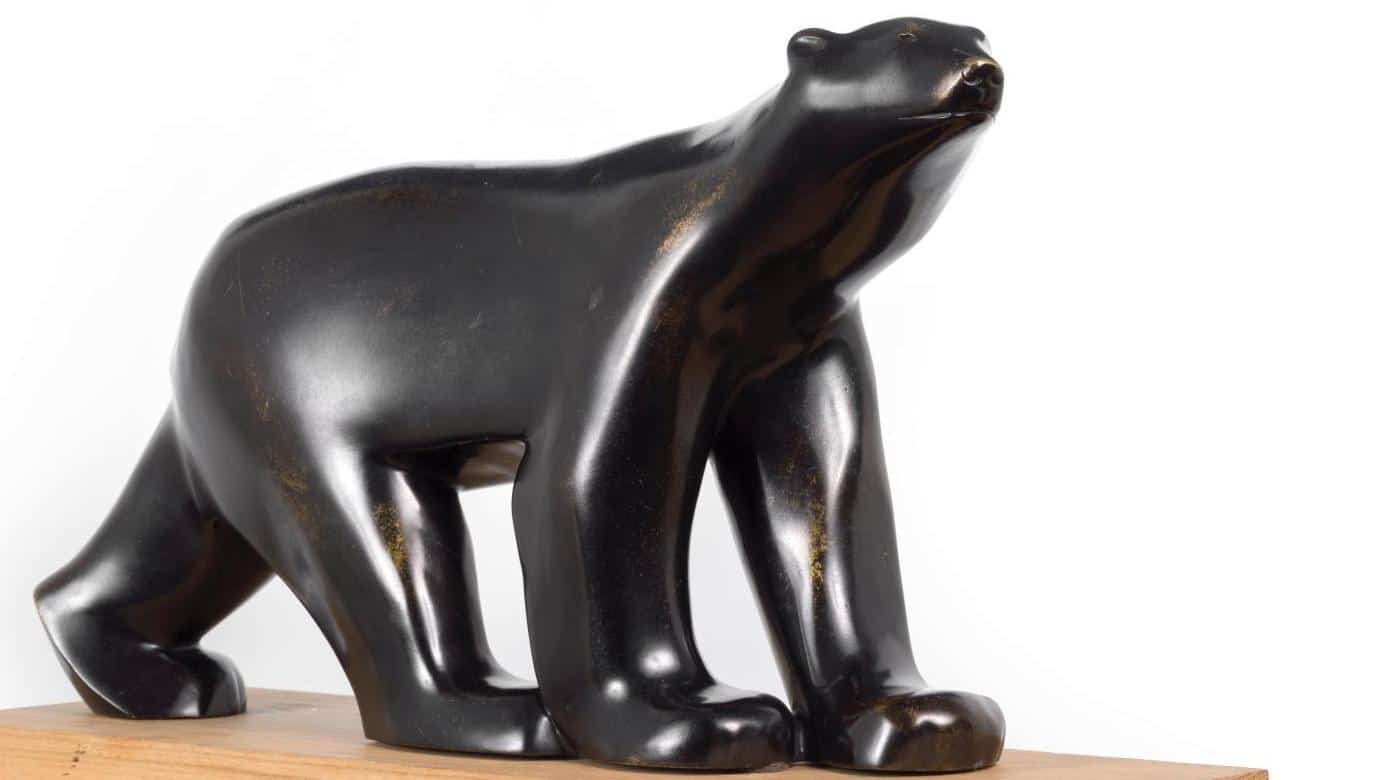
However, his recognition came late and he remained for a long time in the shadow of the artists for whom he was a particularly appreciated marble worker.
His father, a carpenter-cabinetmaker companion, did the first part of his training, which continued with a marble worker, in parallel with evening classes at the Beaux-Arts in Dijon. In 1875, at the age of twenty, Pompon moved to Paris where evening classes were no longer for him at the Fine Arts but at the Petite École (then the name of the School of Decorative Arts). The Jardin des Plantes menagerie fascinates him and he goes there regularly. He made sketches there and later he modeled animals on the spot, using his portable workbench, before reworking these sketches in fresh clay in his studio.
Four years later, he made his debut at the Salon and in 1890, he entered Rodin’s studio as a practitioner; Pompon deeply admires Rodin and the latter holds him in great esteem. Pompon will remain six years in the master’s studio.
The vogue of Japonism did not spare sculptors and Pompon also succumbed to the charm of the clear lines of Japanese prints. At the Louvre, he admired the Egyptian works which captivated him so much that his first known animal sculpture (in 1874) was that of a stag beetle. In 1905, he definitively gave up sculpting human figures and devoted himself solely to those of animals. This choice is accompanied by a new, very personal way: all the naturalistic details are erased, the surfaces no longer faithfully reproduce the fur or plumage, on the contrary, they are smoothed and polished. In this, Pompon seems to follow the adage of Rodin who declared that “copying nature does not consist in reproducing it line by line. »
However, he had to wait more than 15 years before his work was finally appreciated. In 1922, the White Bear finally achieved great success at the Salon d’Automne. We admire this refined work, yet capable of rendering all the movement specific to this carnivore with a heavy and swaying look. Building on his success, in 1927 he founded the Salon des animaliers contemporains.
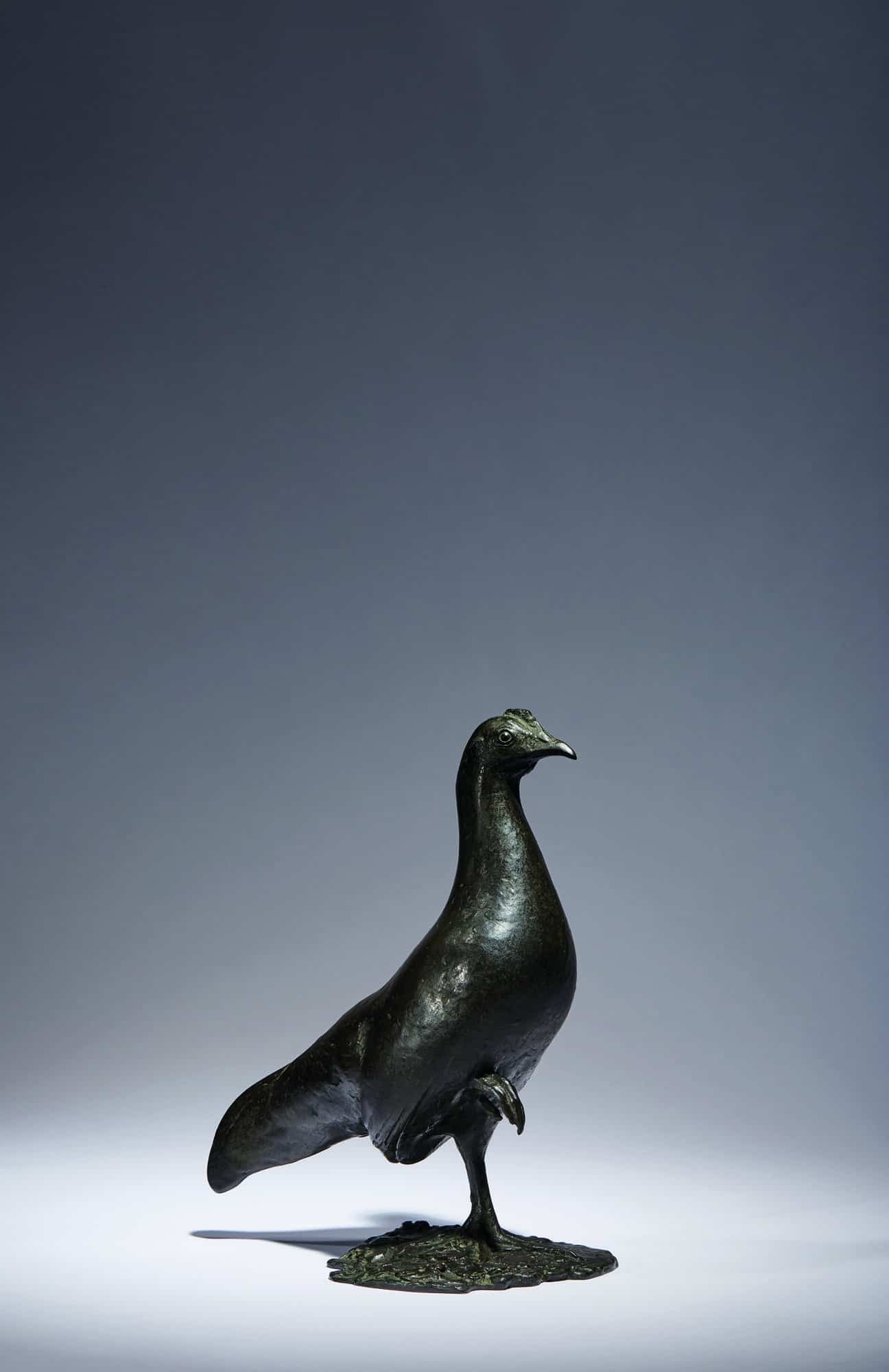
Then there are bulls and even barnyard animals to whom Pompon pays homage when the artistic world looks at them with contempt. His accomplished manner magnifies the subjects and seems to deceive what Brancusi asserted:
It is not the outward form that is real, but the essence of things. Starting from this truth, it is impossible for anyone to express something real by imitating the surface of things.
Roger Godchaux (1878 - 1950)
His gifts for drawing and modeling were recognized very early on, so it was not long before he was admitted to the Ecole des Beaux-Arts in Paris. An assiduous visitor to the Museum of Natural History, the Jardin des Plantes and the Menagerie, Roger Godchaux trains his eye, tests his sense of observation and creates animal sculptures imbued with Barye in substance but not in form. If the touch of the artist is impressionist, his subjects are less enraged than those of the master of the 19th century! Big cats and elephants are represented in their daily life, peaceful and without artifice. The studies are precise and realistic so that the sculptures are admirably naturalistic. Like Paul Jouve, Godchaux appreciates the apparent textures, the roughnesses which modulate the surface and give life to the animals. The sculptor entrusted a large part of his production to the Susse frères foundries but also signed publishing contracts with Valsuani, Gatti, Andro or Planquette.
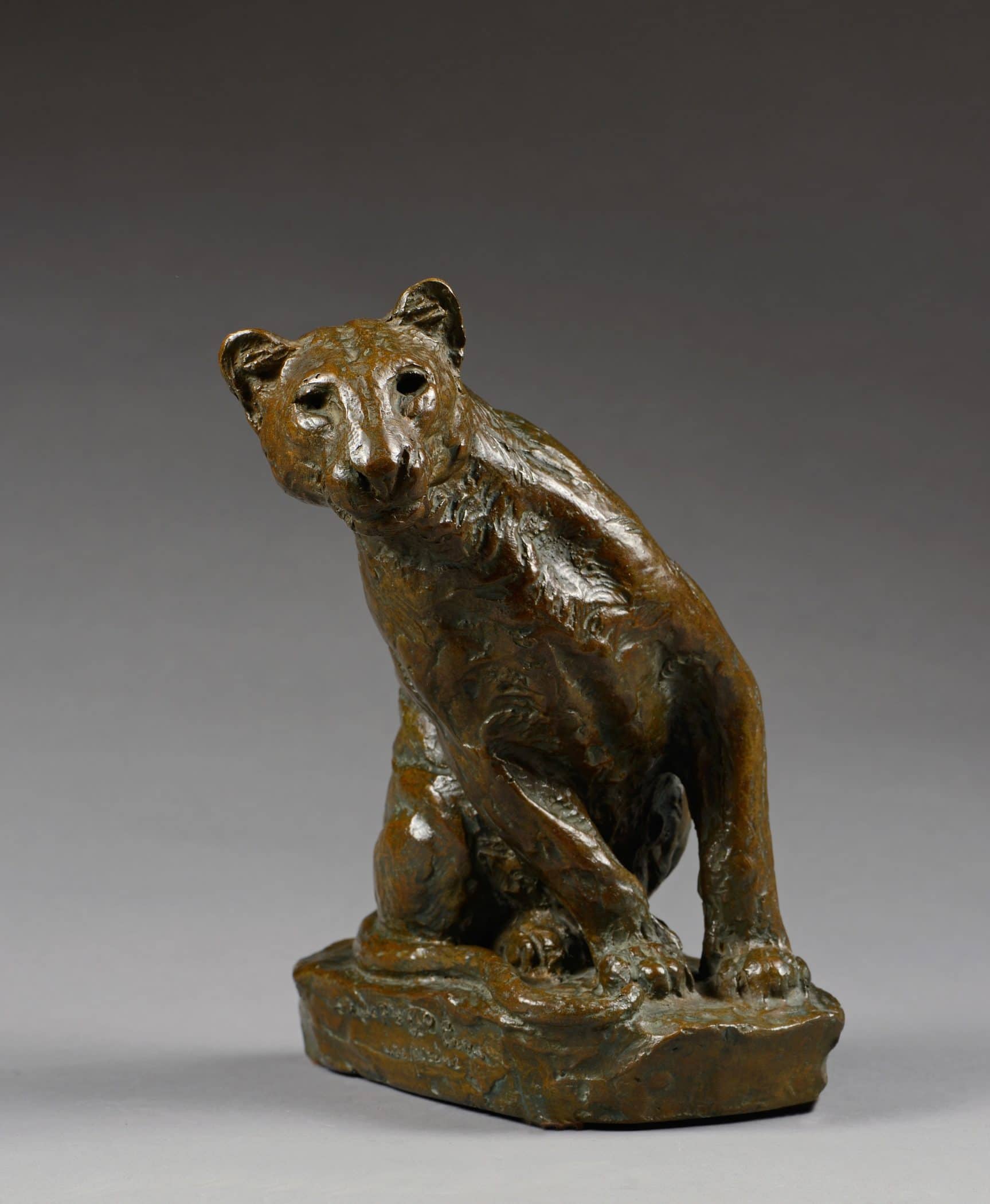
Rembrandt Bugatti (1884 - 1916)
The young artist ended his life at the age of 31. However, his work almost immediately met with success. Like his animal sculptors contemporaries, he assiduously frequented zoological gardens and his naturalist work soon gave way to a unique, powerful and modern style. The Hébrard gallery which represents him cannot satisfy all collectors and encourages the artist to provide more models, generally published in ten numbered proofs, a novelty for the time.
Sensitive to the very friendly welcome of the artists at the Antwerp zoo, Bugatti left to settle in Belgium, without however abandoning Paris, a city to which he returned regularly. At the Antwerp zoo, he found a place commensurate with his fascination for the animal world and that of wild animals in particular. Frans Franckx, guardian of the menagerie, accepts him in his daily professional occupations and thus allows the sculptor to be closer to the felines. He sympathizes so well with a lion cub that the animal will become one of his favorite models!
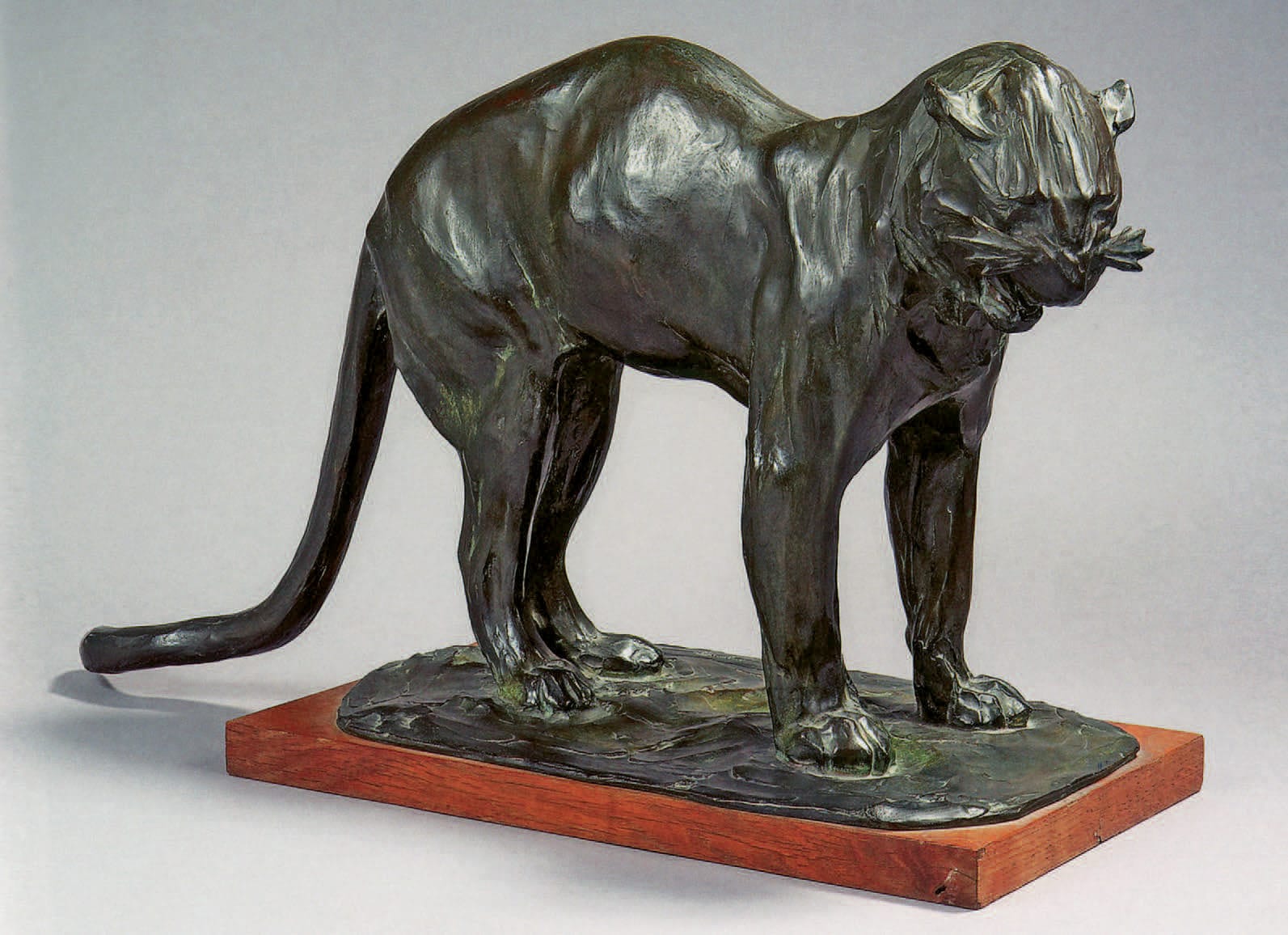
Édouard-Marcel Sandoz (1881 - 1971)
Originally from Basel in Switzerland, Édouard-Marcel Sandoz enrolled at the Beaux-Arts in Paris in 1905. It only takes him three short years to decide to devote himself solely to animal sculpture. A small gray marble owl marks its debut and announces its stylized and geometric manner. Constantly in search of a form of animal truth, his studio becomes a veritable menagerie in which he welcomes all kinds of furry or feathered animals; a fennec in particular will be the subject of several stylized works. It is also this small model with big ears that is today one of the most popular models for collectors. Sandoz had the opportunity to observe the animal in its natural habitat in North Africa so well that he was able to transcribe with talent and realism the lines and movements of the “sand fox” in his bronze sculptures. From fennec foxes to cats, including sharks and big cats, no animal escaped the patient contemplation of Sandoz and his bronze menagerie. The artist with synthetic lines oriented his style towards more realism from the 1930s.
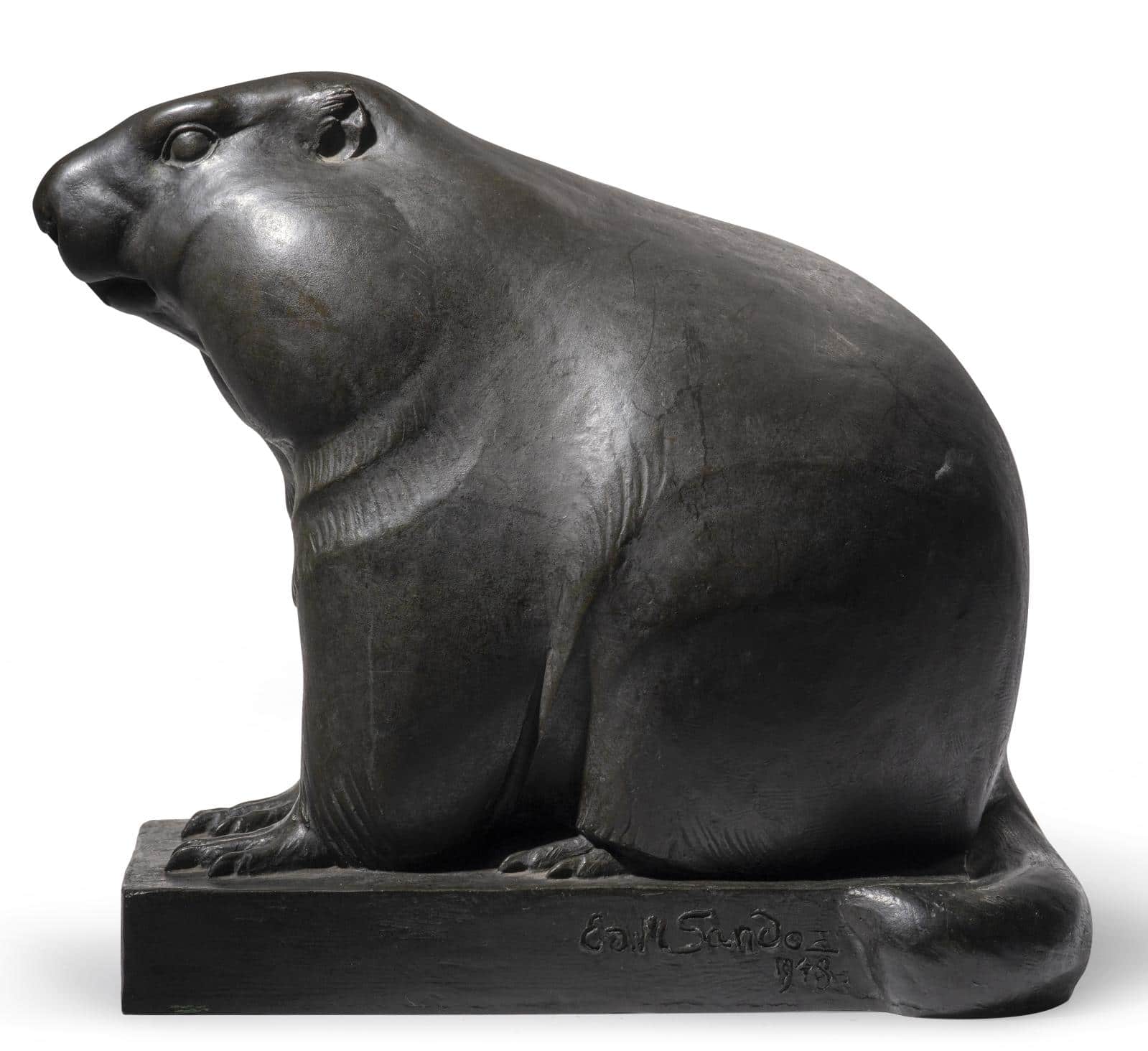
Georges Guyot (1885 - 1972)
The young man began his career with a wood sculptor in the Faubourg Saint Antoine in Paris. Like many artists of the time, he frequented the Jardin des Plantes and the Louvre, where he admired the works of Barye. At the age of 18, he enlisted in the army, in the Rouen infantry regiment, without however abandoning his artistic practice, which he pursued in the evening classes at the Beaux-Arts in the same city. It was precisely his teacher at the time who encouraged him to send a breathtakingly talented bear to the Salon des Artistes français. The committee did not hesitate for a moment and accepted the work of the young Guyot. The First World War upset the career plans of the young sculptor and he had to, for various reasons, abandon his art for about ten years.
Eventually, he joined the Group of Twelve around Pompon; his success was almost immediate, his career was launched and he regularly received orders from the State. If he appreciates felines, he is also interested in bears and monkeys, less coveted models whose deep instinct he manages to grasp. Very close to the Art Deco movement, Guyot is neither in a pure stylization à la Pompon nor in the romantic realism of Barye. Halfway, in a unique style, he transcribes the calm dangerousness of big cats, the curiously human mischievousness of bears and the provocative gaze of turbulent monkeys.
![Georges-Lucien GUYOT (1885-1973), Standing polar bear, model designed circa [1929], proof n° 6/7. Private collection](https://pipat-antiquites.fr/wp-content/uploads/2022/06/georges-lucien-guyot-ours-sculpture-animaliere.jpg)
This brief presentation of the main animal sculptors who marked the 19th and 20th centuries should not make us forget the talents that shone in France and in neighboring countries. To name just one, let’s remember the sculptor Jean Gaspar (1861 – 1931), considered as the Belgian Bugatti and of which we presented some time ago the superb proof of an elephant.

Marielle Brie
Art Historian for Art Market and Cultural Media
Author of the blog Objets d’Art et d’Histoire
Autres ressources et documentations
27 April 2024
Vienna Bronzes
Collectible objects since their creation, Vienna bronzes play the role of accumulation in bourgeois interiors. They are charming manifestations of the social success of their…
29 March 2024
A Micro-mosaic Grand Tour Cross
An emblematic art of the Grand Tour, micro-mosaics rival painting in its most refined productions.
19 March 2024
The Cordoba Leather or Gilded Leather
This famous leather gave its letters of nobility to Spanish production drawing generously on oriental know-how known since Antiquity.
6 February 2024
A Solid Silver Inkwell, 1860 – 1890
This solid silver inkwell is a true sculpture in itself.
4 December 2023
Chinese Opium Den Pillow, 19th Century
A surprising object to our Western eyes, Chinese rigid pillows have long been preferred to their fabric counterparts.
22 November 2023
Georges Clémenceau (1841 – 1929) Bust
A major politician and major cultural figure, Georges Clémenceau encounters both the First World War and the representatives of an art freed from the codes of the Academy.
